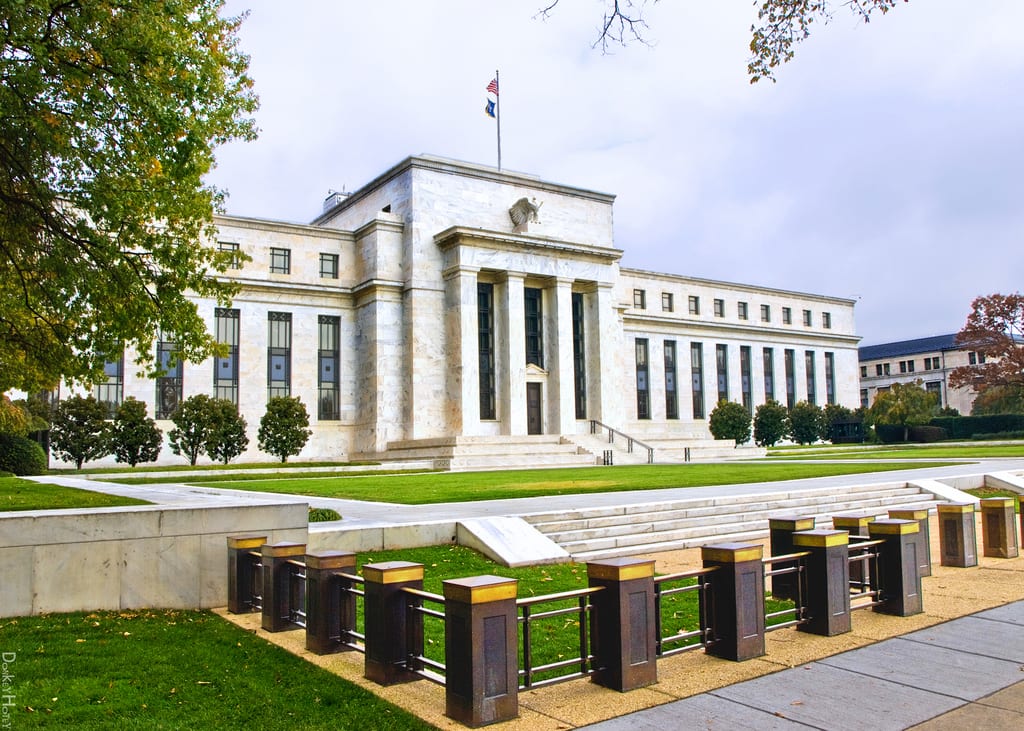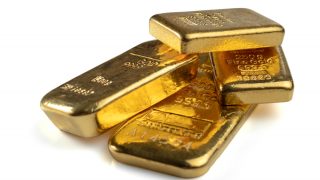The Fed Says Bye Bye to QE
Before we get into the details of the Fed’s decision to end its bond buying program, and what that means going forward, I want to make an exciting announcement.
The Weekly ETF Report is moving to a new day, Friday. The change will start next week on Friday, Nov. 7. We will no longer be publishing each Wednesday.
One big reason for this change has to do with the schedule of my weekly podcast, Doug Fabian’s ETF Strategies. That podcast is broadcast Friday mornings, so along with the new publication day for the Weekly ETF Report, you’ll get an audio link to the latest 30-minute-plus recap of what’s going on in the markets, as well as all of the action in the world of exchange-traded funds (ETFs).
So, be sure to mark your calendars, as next week you’ll be receiving your Weekly ETF Report on Friday, not on Wednesday. Now, let’s focus on the Fed.
As was widely anticipated, today the Federal Reserve announced the end of its massive bond-buying program. The Federal Open Market Committee (FOMC) announced that it would no longer purchase mortgage-backed and Treasury assets, also known as quantitative easing (QE), although it did so basically by omission.
While I think the Fed getting out of the money-printing business is a good thing for the overall health of the economy, when it comes to the short- and medium-term effect on the equity markets, things may not be so healthy.
Consider that since the Fed began the original QE in December 2008, stocks have risen substantially throughout every round of easing. Unfortunately, when the different phases of quantitative easing have ended (QE1, QE2, Operation Twist), stocks have suffered a substantive sell-off.
In fact, the main reason why things picked up in the markets after the end of those respective QE rounds was because the Fed implemented more QE.
Will this happen again? As of now, that seems unlikely. But if stocks and the economy begin to really falter, I wouldn’t put it past the Fed to take action to stimulate both. Perhaps the biggest thing to watch for is not more QE, but rather when the Fed plans to begin raising interest rates again.
Judging by today’s FOMC statement, it’s hard to tell what the Fed has in mind in terms of a time frame for rate hikes. Sometime next year is nearly a certainty. But when, at what pace, and what increased interest rates will do to stocks and bonds are real unknowns right now for investors.
I think the only way to be certain you can protect yourself from a big post-QE sell-off, and to make sure you are in the market when the bulls are running hard, is to have a proven plan in place that operates on objective market rules and that follows the key trends that never fail to tell us precisely where the market is at all times.
If you want to discover more about how to this proven plan works, and how it can work for you, then I urge you to check out my Successful ETF Investing newsletter today.
Top 10 ETF FAQs
I get a lot of questions every day about ETFs. So, this week I decided to compile a list of the top most frequently asked questions (FAQs) to help investors understand the basics of ETFs and how they work. So, here you go!
1) What is an ETF?
An ETF, or exchange-traded fund, is an investment fund traded on stock exchanges. An ETF holds assets such as stocks, commodities or bonds. Most ETFs track an index, such as the S&P 500 or Dow Industrials, etc.
2) What are the advantages of investing with ETFs?
There are many advantages of investing with ETFs. The primary advantages of using ETFs include their low cost, ease of use, transparency, wide variety of choice, tax efficiency and liquidity.
3) What are the disadvantages of using ETFs?
ETFs do require some specialized knowledge to understand how to use them successfully. In some cases, they can be more complicated than mutual funds. When purchasing an ETF, you also incur a transaction fee. If you are making small purchases month after month, over time those fees can reduce your total return. There are more than 1,600 ETFs listed on U.S. exchanges, so the sheer number alone can be intimidating for some investors.
4) Where, and how, do I buy ETFs?
The purchase or sale of ETFs is done through a brokerage account. Popular national brokerage firms such as Fidelity, Schwab, TD Ameritrade and Vanguard are good choices for your brokerage account. Once you have a brokerage account, you can follow that investment firm’s instructions to buy and sell ETFs online.
5) What are the main differences between ETFs and mutual funds?
ETFs are priced throughout the trading day, while mutual funds are priced just once a day at the close of trading. ETFs are completely transparent, meaning you always know what an ETF holds. Mutual funds are only required to report their holdings quarterly. ETF purchases do involve a transaction fee, but there are no sales charges or deferred sales charges like there are with mutual funds. ETFs also are much cheaper, more tax efficient and offer far more choice than mutual funds.
6) What are some common mistakes made when investing with ETFs?
Investing involves risk, and using certain ETFs (e.g. ETFs that use leverage) can be inappropriate for some investors. Some small, i.e. thinly traded, ETFs have wide bid/ask spreads. This can cause investors to buy at a high price and to sell at a low price. ETFs require some specialized trading knowledge to sidestep these and other mistakes. Educating you on how to avoid these mistakes is one of the missions of Doug Fabian’s Weekly ETF Report.
7) Are ETFs for stocks only?
No. ETFs allow investors to allocate to stocks, specific market sectors, foreign stocks, fixed income, commodities and currencies. The growth in the number and variety of ETFs over the past several years means that almost every type of asset class that is publicly traded now is accessible with ETFs.
8) Do ETFs pay dividends and interest like mutual funds?
Yes. ETFs pass through dividends paid from stocks, as well as interest from fixed income securities, directly to shareholders. Distribution frequency varies depending on the ETF, as some ETFs pay monthly while others pay quarterly or semiannually.
9) What are the tax advantages of using ETFs?
ETFs offer greater tax advantages to shareholders than mutual funds. Because most ETFs are structured like an index fund, there is an extremely low turnover rate in the holdings when compared to mutual funds. It is the buying and selling of assets within a mutual fund that tends to create tax issues, but there is very little of that when investing with ETFs.
10) Are there costs and sales charges when purchasing ETFs?
When purchasing an ETF, you likely will incur a transaction fee that is charged by your brokerage firm. While there are no sales charges, commissions or redemption fees associated with ETFs, you likely will have to pay the small transaction cost associated with buying and selling any asset.
If you have questions about anything ETF related, just send me an e-mail.
On War and Central Banks
“It is no coincidence that the century of total war coincided with the century of central banking.”
–Ron Paul, “End the Fed”
There are many opinions on the Federal Reserve and the role, both good and bad, that it has played in society. In the quote here, the independent-minded former Representative from Texas, Ron Paul, brings up the fact that with the help of central banks, nations have been able to print money and fund big-government projects. And what does the state do best? Wage war. Think about it.
Wisdom about money, investing and life can be found anywhere. If you have a good quote you’d like me to share with your fellow Weekly ETF Report readers, send it to me, along with any comments, questions and suggestions you have about my audio podcast, newsletters, seminars or anything else. Ask Doug.
In case you missed it, I encourage you to read my e-letter column from last week about what we can learn from the “snap back” rally. I also invite you to comment in the space provided below.



